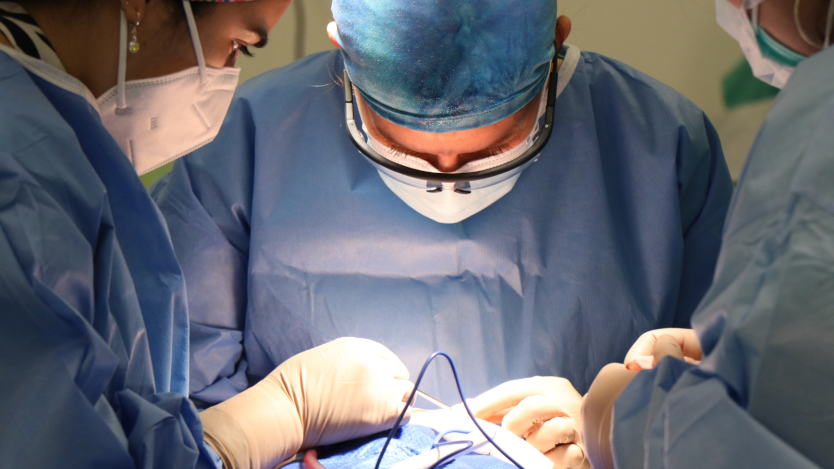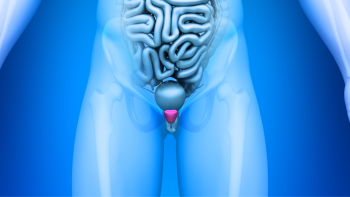Prostate adenoma: what it is, symptoms, causes and treatments

- What is a prostate adenoma?
- What are the main symptoms of prostate adenoma?
- Causes of prostate adenoma formation (BPH)
- What is the progression of prostate adenoma or benign prostatic hyperplasia?
- What is the treatment for prostate adenoma or benign prostatic hyperplasia?
- Prostate adenoma is the benign growth of the prostate gland, more correctly called benign prostatic hyperplasia.
- The symptoms caused by prostate adenoma are directly related to urination and can be obstructive or irritative in nature.
- The only definitive solution for prostate adenoma (BPH) is surgical intervention.
What is a prostate adenoma?
Prostate adenoma is an old term that refers to the entity that defines a progressive growth of the prostate gland or prostate. Nowadays, prostate adenoma is medically known by the acronym BPH, which stands for benign prostatic hyperplasia.

Do you need prostate surgery?
Request a free and immediate appointment with our specialists
The concept and problems arising from abnormal prostate growth such as prostate adenoma were already described in the earliest medical texts in ancient Greece.
As scientific advances progressed, the concept of prostatic adenoma was modified and evolved into other terms such as benign prostatic hypertrophy and, later, the current term benign prostatic hyperplasia to replace the earlier concept of prostatic adenoma.

The term prostatic adenoma has been used colloquially and generically to define this type of pathology.
In concept, prostate adenoma or benign prostatic hyperplasia is defined as the growth of the tissues that make up the prostate gland producing an obstruction of the urine outflow duct that is clinically manifested by defined symptoms.
What are the main symptoms of prostate adenoma?
The most typical symptoms of prostate adenoma or benign prostatic hyperplasia are decreased urinary stream during urination, increased urinary frequency, sensation of incomplete bladder emptying and increased frequency at night or nocturia.

Do you need prostate surgery?
Request a free and immediate appointment with our specialists in Urology
Within all the signs or symptoms that define prostate adenoma, they can be divided into 2 distinct typologies:
Obstructive symptoms
- Difficulty in the onset of urination and a delay in the onset of urination.
- Decreased force of the urinary stream.
- Intermittent and prolonged urination.
- Dribbling after completion of urination.

Irritative symptoms
- Urinary urgency or the sudden onset of urination.
- Urinary frequency or increased frequency of urination in a day.
- Nocturia or an increase in the number of times the patient has to get up at night to urinate.
Causes of prostate adenoma formation (BPH)
It is increasingly accepted scientifically that problems arising from prostate enlargement are thought to be caused by an increase in the muscular and glandular components of the prostate, as well as alterations in the muscle that compresses the bladder to facilitate emptying, known as the detrusor muscle of the bladder.

In the formation of prostate adenoma, nowadays called benign prostatic hyperplasia, three factors are responsible: a static factor, a dynamic factor and the aforementioned alterations in the functioning of the bladder through failures in its main muscle.
- The static or mechanical component refers to the growth or hypertrophy of components of the glandular tissue of the prostate. It is this growth that causes a decrease in the calibre or diameter of the urethra (the tube that carries urine and sperm from the bladder to the penis), causing obstruction.
- The dynamic component refers to the increased tension of the muscular components of the prostate itself and the end of the bladder.
- The third main component involved in the origin of prostate adenoma or benign prostatic hyperplasia is the presence of bladder contractility disorders. This last factor is of particular importance in the elderly, in whom the age-related difficulty in holding urine worsens the symptoms related to urinary flow obstruction.
What is the progression of prostate adenoma or benign prostatic hyperplasia?
One in four men aged 55 years experience decreased urinary flow, a proportion that increases to one in two after the age of 75 years. This high incidence and increasing prevalence of obstructive symptoms suggests that every man aged 40 to 50 years has a 20-30% lifetime chance of requiring surgery for prostate adenoma or benign prostatic hyperplasia.

Do you need prostate surgery?
Request a free and immediate appointment with our specialists in Urology
There is no linear and proportional relationship between the presence of prostate enlargement and the appearance of symptoms, so that it is not always the case that a very enlarged prostate will have the most severe symptoms, just as it is also possible that patients with mild enlargement may still have severe symptoms related to prostate adenoma or benign prostatic hyperplasia.
What is the treatment for prostate adenoma or benign prostatic hyperplasia?
The definitive intervention to solve a prostate adenoma or BPH is surgery, especially in the most severe cases.
Nowadays there are a multitude of surgical solutions that adapt to the characteristics of each patient.
Thulium laser or the Holmium laser adapt to practically all prostate sizes, improving the quality of life of patients suffering from prostate adenoma and reducing and alleviating the postoperative period, especially in comparison with more aggressive techniques such as transurethral resection of the prostate.

Do you need prostate surgery?
Request a free and immediate appointment with our specialists in Urology
Urolift system for the treatment of prostate adenoma or benign prostatic hyperplasia is a good solution for those patients who, while still young, begin to suffer from signs or symptoms of prostate adenoma and do not want to undergo surgery.
The possibility of undergoing an outpatient technique, without complications, quickly and with immediate benefit is possibly the best option for this type of patient.
Medical disclaimer: All the published content in Operarme is intended to disseminate reliable medical information to the general public, and is reviewed by healthcare professionals. In any case should this information be used to perform a diagnosis, indicate a treatment, or replace the medical assessment of a professional in a face to face consultation. Find more information in the links below:

